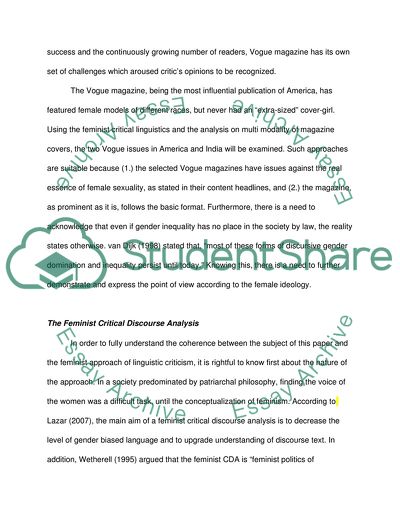Cite this document
(The Standard Beauty: Women in Vogue Case Study Example | Topics and Well Written Essays - 2500 words, n.d.)
The Standard Beauty: Women in Vogue Case Study Example | Topics and Well Written Essays - 2500 words. Retrieved from https://studentshare.org/gender-sexual-studies/1747156-xxx-text-analysis
The Standard Beauty: Women in Vogue Case Study Example | Topics and Well Written Essays - 2500 words. Retrieved from https://studentshare.org/gender-sexual-studies/1747156-xxx-text-analysis
(The Standard Beauty: Women in Vogue Case Study Example | Topics and Well Written Essays - 2500 Words)
The Standard Beauty: Women in Vogue Case Study Example | Topics and Well Written Essays - 2500 Words. https://studentshare.org/gender-sexual-studies/1747156-xxx-text-analysis.
The Standard Beauty: Women in Vogue Case Study Example | Topics and Well Written Essays - 2500 Words. https://studentshare.org/gender-sexual-studies/1747156-xxx-text-analysis.
“The Standard Beauty: Women in Vogue Case Study Example | Topics and Well Written Essays - 2500 Words”, n.d. https://studentshare.org/gender-sexual-studies/1747156-xxx-text-analysis.


